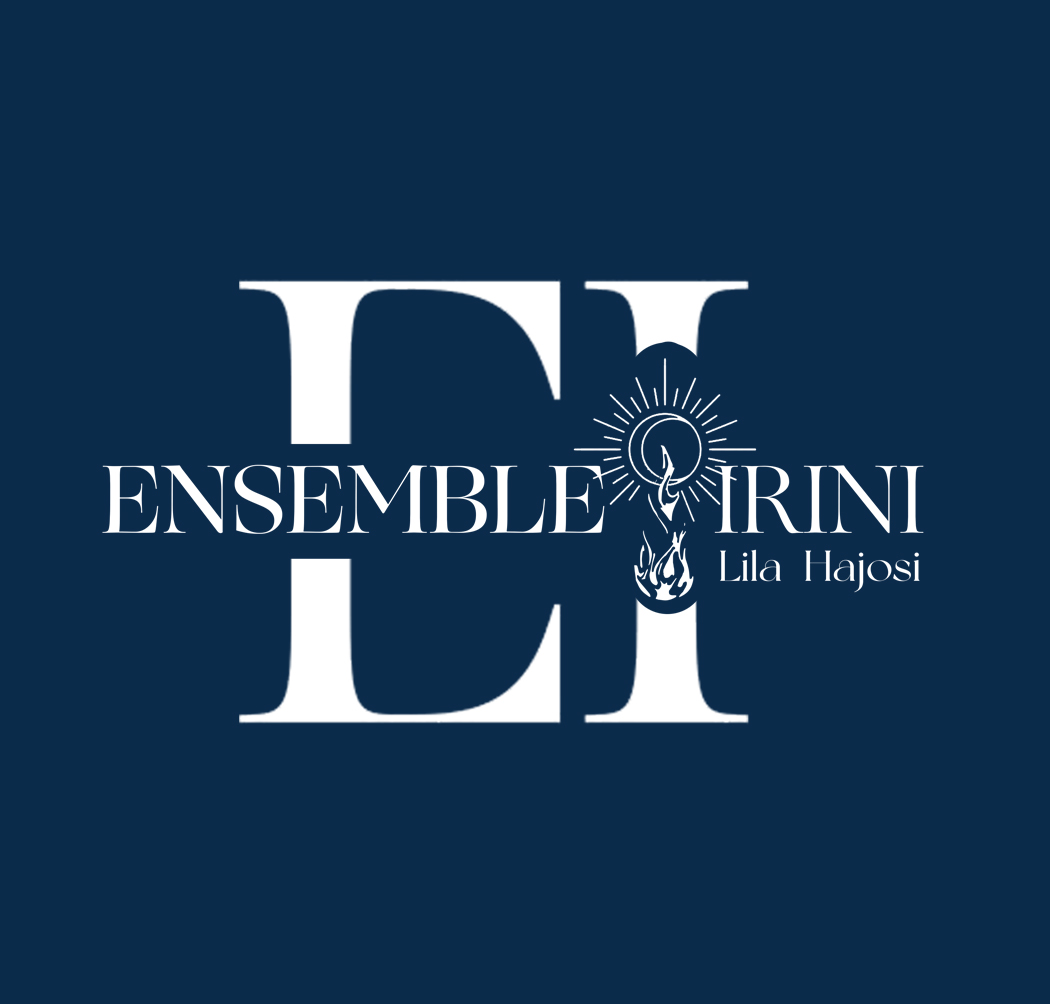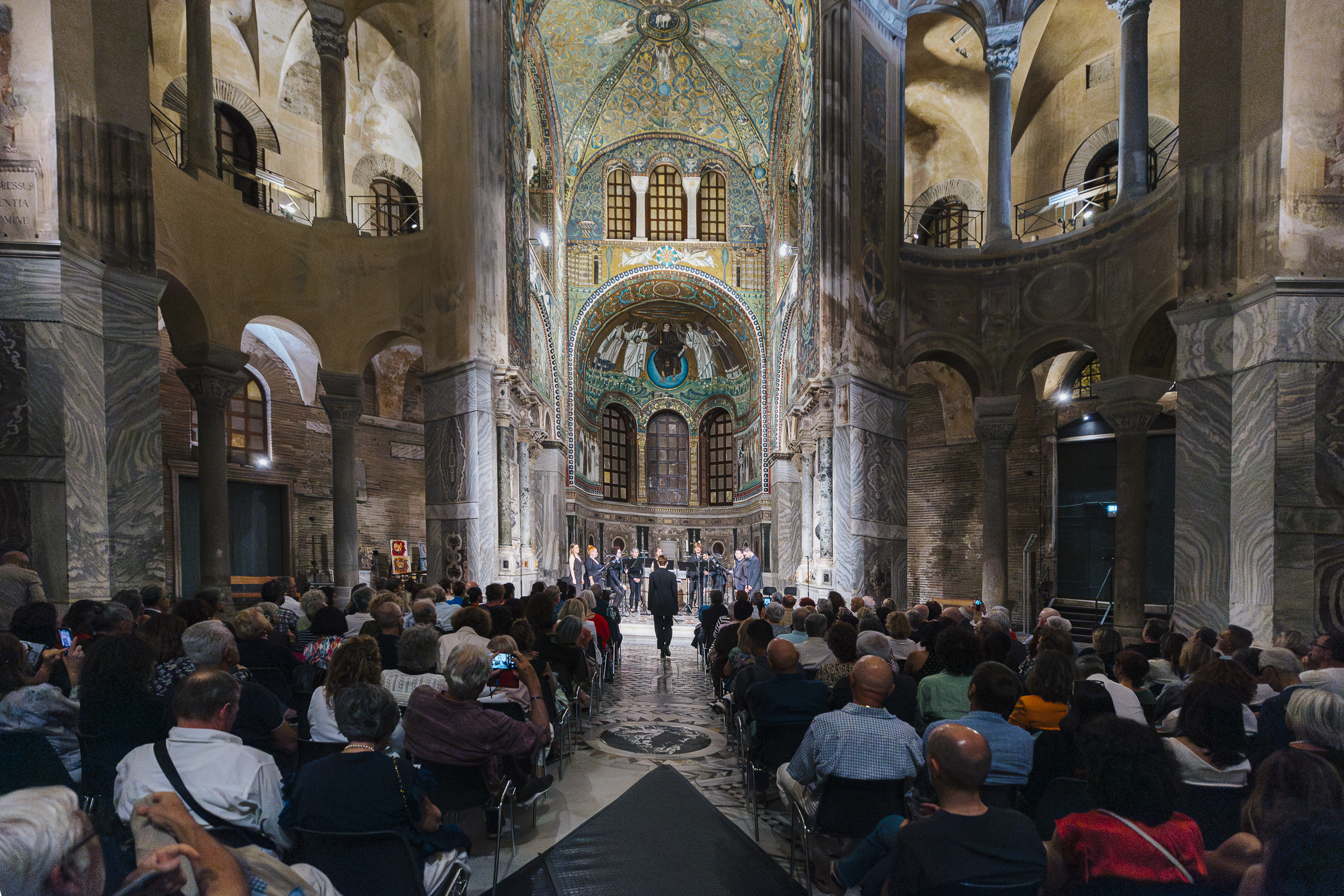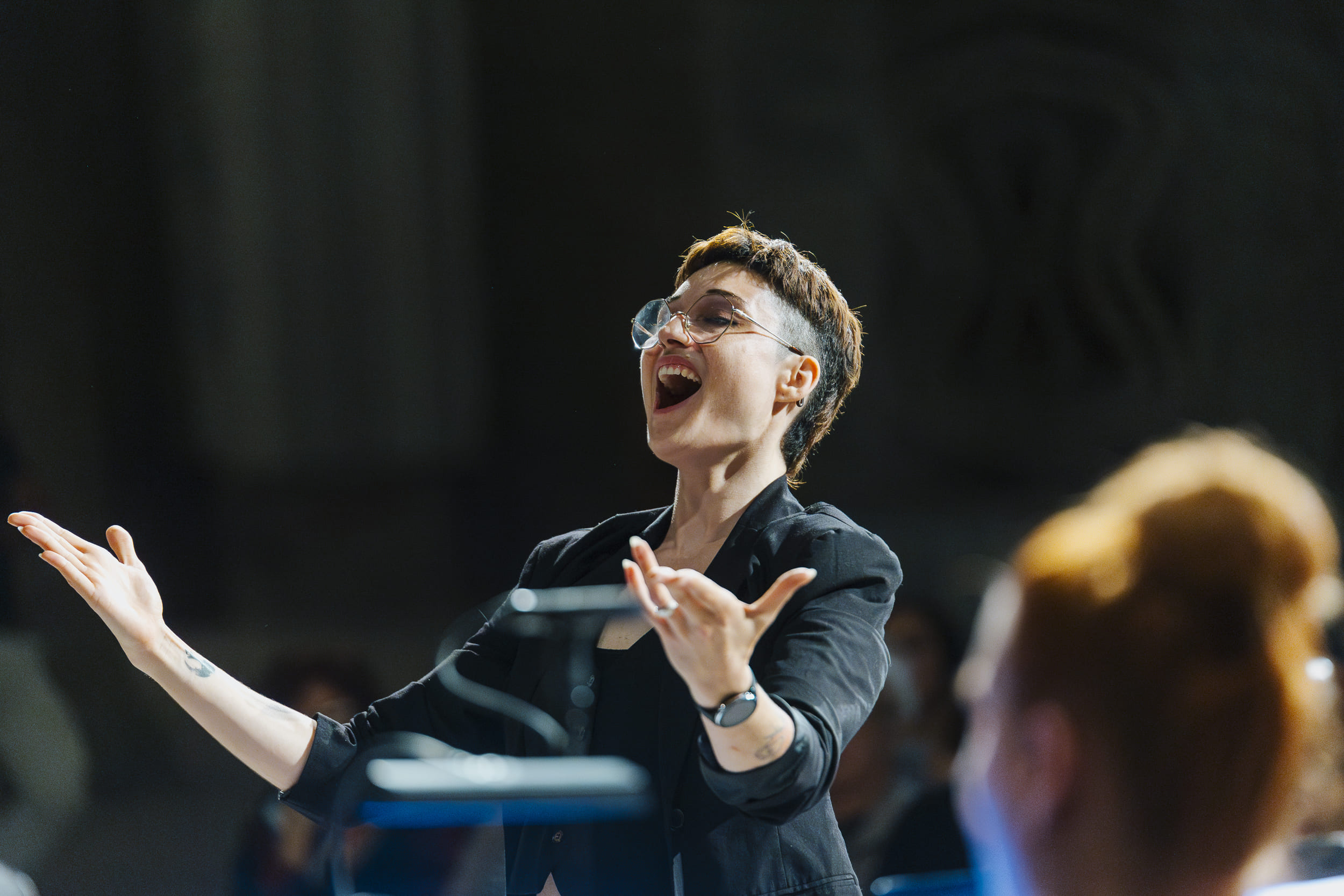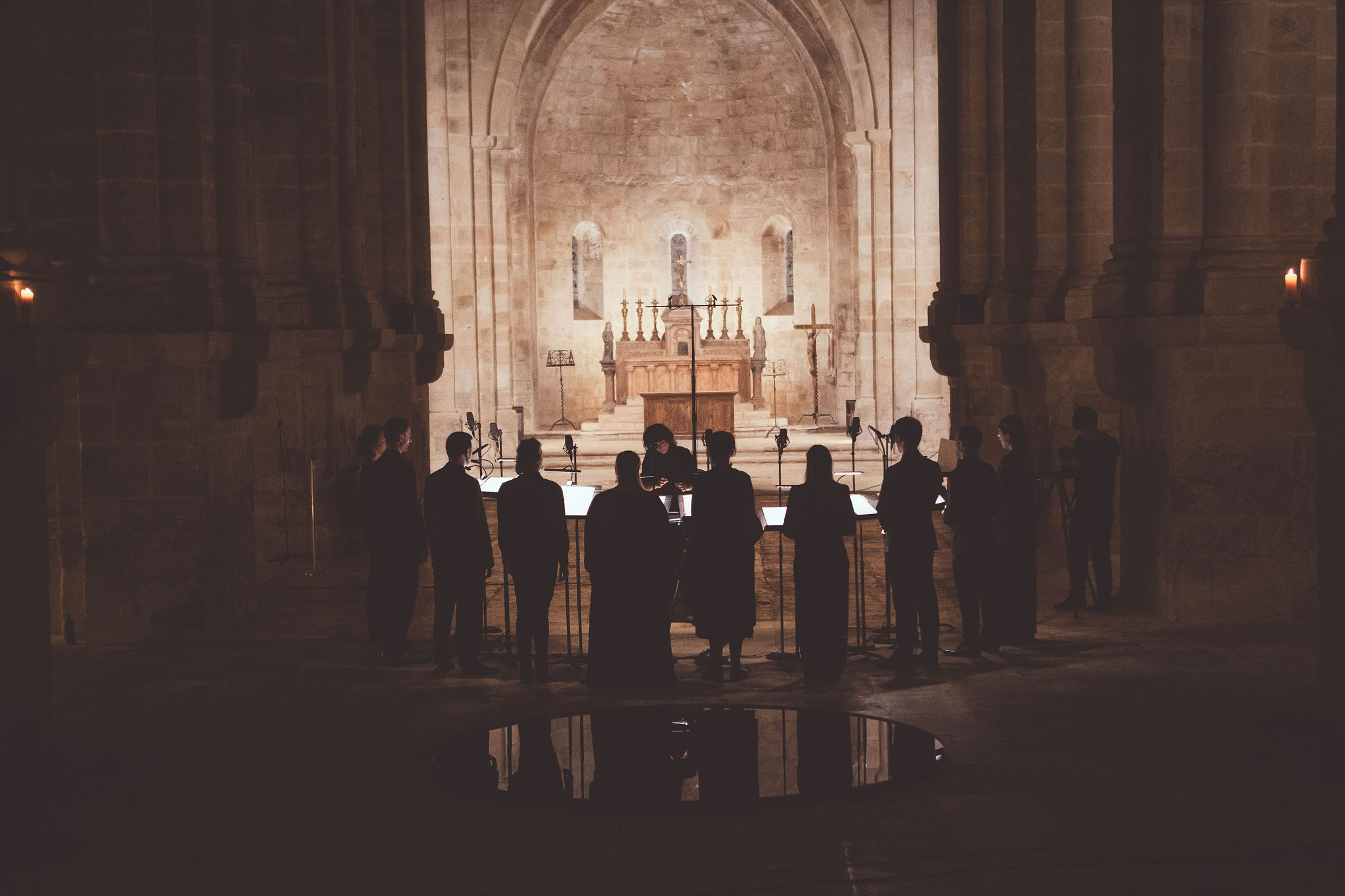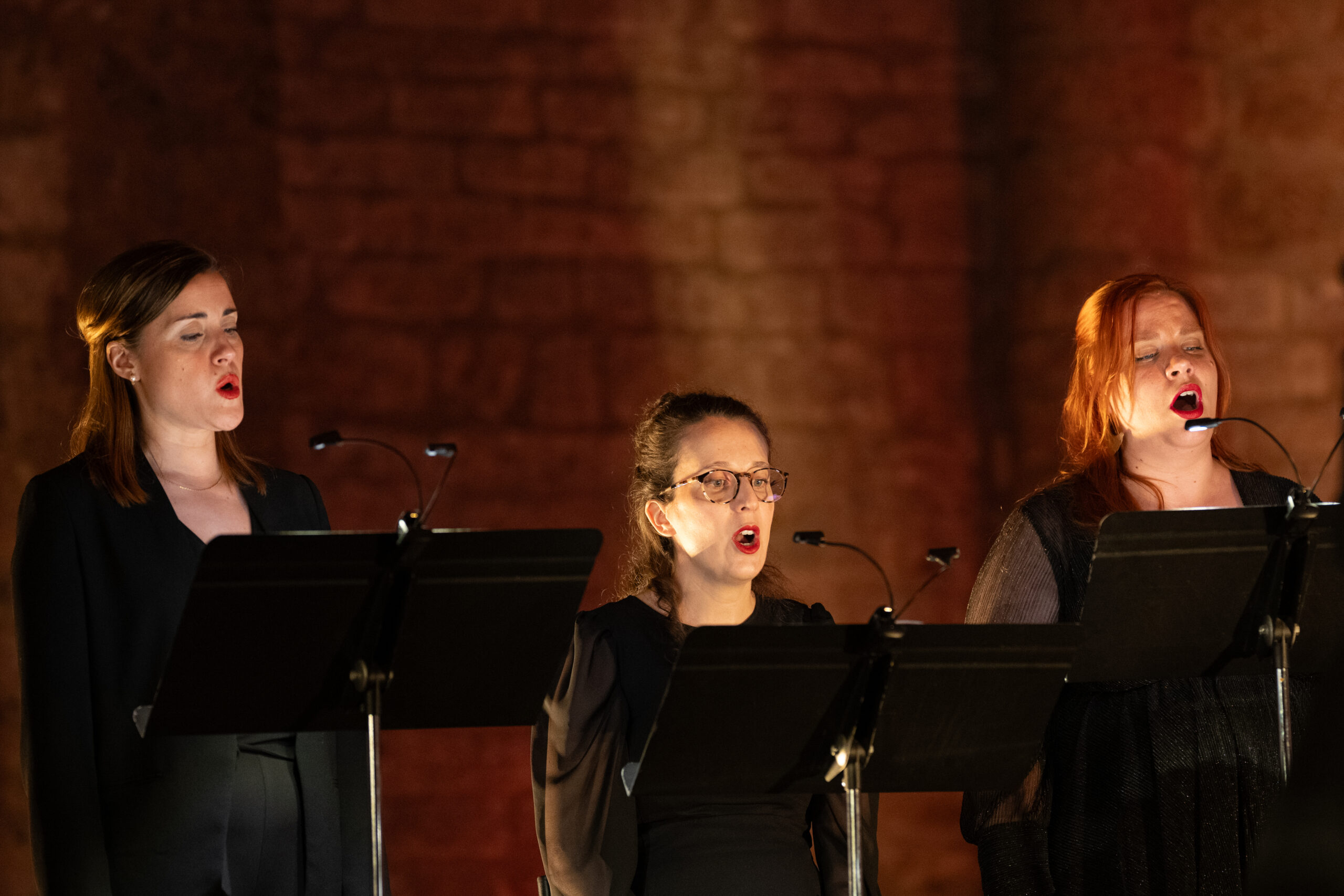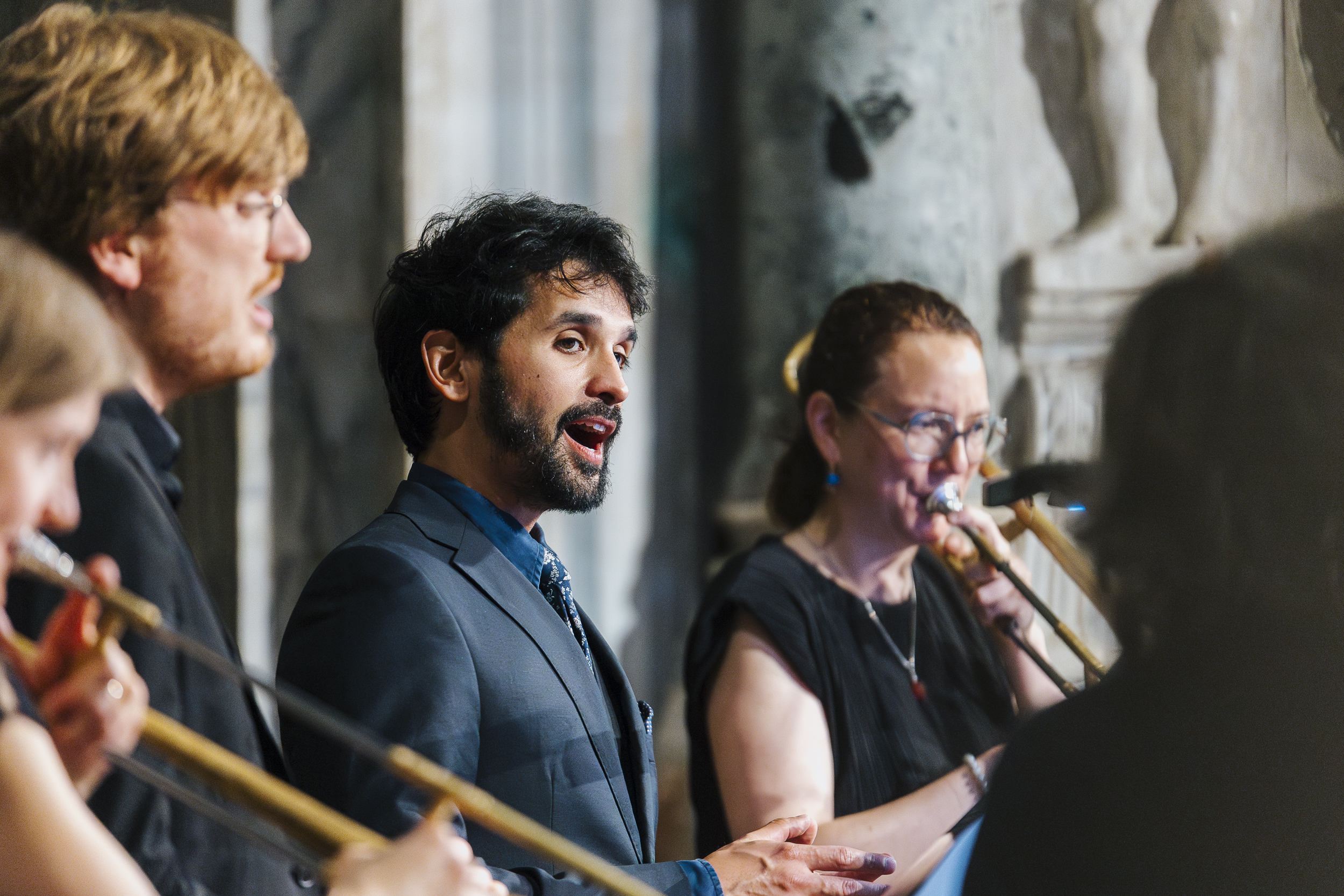
| "O Sidera is the music of what cannot be said, the sound of silent amazement." |
|---|
"The language, distorted by Lassus or distended by the Byzantine Asmatikon, is erased to give way to pure sensation. It is a new grammar that is created, that of the meeting of music with the body, of the bodies of the singers with the body of the gesture of direction with the bodies of the listeners, with the backwash of the sound waves.
O Sidera is a shock, a rapture, which is experienced first and explained afterwards.
The program is read when the singing stops, as if to look for a rational explanation for what one has just gone through."

O Sidera: a call to heaven
"A female version of the prophet, the figure of the Sybil inspired Roland de
Lassus to write a collection of songs of striking depth and sensitivity.
Based on enigmatic texts announcing the coming of the Saviour, the
composer shows himself to be just as prophetic in his writing, whose originality and strange character fascinated his first listeners, first and foremost Duke Albert V of Bavaria. The latter became fascinated
with this music, which he had published in the form of richly decorated manuscripts
and with its composer, whose services he immediately engaged, keeping him at his side
for many years.
Many mysteries still remain as to the date and place of composition of these
pages, which were probably written around 1555. The female oracles
of antiquity fascinated Renaissance artists at the time. While
Michelangelo celebrated the sybils in his frescoes in the Sistine Chapel,
Roland de Lassus chose twelve of these prophetesses whose verses had been
collected between the second century BC and the seventh century of
. Ten years earlier, a Latin translation of this collection had appeared in Basel
entitled Oracula Sibyllina.
The Irini ensemble offers us a dreamy and bewitching interpretation of these
songs, set against liturgical pieces from Constantinople. This
O Sidera programme is perfectly in line with the approach of this
vocal ensemble, founded in 2015 by Lila Hajosi, which is committed to "creating links that liberate"
between the European and Byzantine repertoires, between the Middle Ages and creation.
Here he invites us to take the paths of dreams and look up to the heavens.
"There is a deep link between humanity, its journey, and what the sky offers to
its gaze in the primordial night where all the questions, all the chasms,
the vertigo melt in a twist of the neck upwards" says Lila
Hajosi.
Florence Petros
Songs of the Christian Mystique
"Carmina chromatico" Prophetiae Sibyllarum, Orlande de Lassus ● 1min
"Sibylla Persica", Prophetiae Sibyllarum, Orlande de Lassus ● 2mn
"Sibylla Lybica", Prophetiae Sibyllarum, Orlande de Lassus● 2mn
"Sibylla Delphica" Prophetiae Sibyllarum, Orlande de Lassus● 2mn
Cheruvikon, "We who in this Mystery represent the Cherubim" Byzantine hymn ● 6mn
"Sibylla Cimmeria" Prophetiae Sibyllarum, Orlande de Lassus ● 2mn
"Sibylla Samia" Prophetiae Sibyllarum, Orlande de Lassus ● 2mn
"Sibylla Cumana" Prophetiae Sibyllarum, Orlande de Lassus ● 2mn
"Sibylla Hellespontiaca" Prophetiae Sibyllarum, Orlande de Lassus ● 2mn
"Sibylla Phrygia" Prophetiae Sibyllarum, Orlande de Lassus ● 2mn
"Agni Parthene", Byzantine Marian hymn St Nektarios of Aegina ● 5mn
"Sibylla Europea" Prophetiae Sibyllarum, Orlande de Lassus ● 2mn
"Sibylla Tiburtina" Prophetiae Sibyllarum, Orlande de Lassus ● 2mn
Acathist, 2nd Stanza,(Byzantine Hymn of the Annunciation) ● 5mn
Polyeleos, Psalms 134-135, Byzantine song of praise ● 6min
"Sibylla Erythrea" Prophetiae Sibyllarum, Orlande de Lassus ● 2mn
"Sibylla Agrippa" Prophetiae Sibyllarum, Orlande de Lassus ● 2mn
- Lila Hajosi: direction, arrangements
- Eulalia Fantova: mezzo
- Julie Azoulay: contralto
- Benoît-Joseph Meier: tenor
- Guglielmo Buonsanti: bass
- Sébastien Brohier : bass
Songs of the Christian Mystique
"Great Unknowable, O the poignant call of your flute!"
Rabindranath Tagore
Committed to promoting early music and to appropriating little-represented repertoires, it is towards Christian Mysticism through the figures of the Sibyls, Cherubim, the Mystery of the Incarnation. The ensemble turns to the divine "unknowable", where reason is lost and where spirit and music take the path of the strange and the dream with "O Sidera", a programme in mixed quartet which will put into perspective the Prophecies of the Sibyls by Roland de Lassus with extracts from the Byzantine repertoire.
The Prophecies of the Sibyls - Orlande de Lassus
Twelve Sibyls, ancient diviners, became in the Middle Ages the counterparts of the Prophets, announcing for some from the depths of the ages (2nd-7th centuries) the coming of a child who would become the Savior of the World. One can understand the fascination of the Renaissance, resolutely turned towards Antiquity, for these texts shrouded in mystery. Michelangelo painted them on the ceiling of the Sistine Chapel. And it is perhaps while he was in Rome as Chapel Master of St John Lateran that Roland de Lassus met them and drew from their figures with names already so dreamy and evocative of distant wonders (Sibylla Delphica, Persica, Erythrea, Cumana, Hellespontiaca, Libyca.) the inspiration of this collection composed somewhere between Rome, Antwerp and Munich, during this short period of disappearance (1554-1555) during which nobody knows with certainty what became of the composer. It was in 1556 that Albert V of Bavaria gave him this extraordinary score, the result of the new practice praised by Nicola Vincentino. The same defends the modernity of this absolute and fascinating chromaticism inherited from a fantasized Antiquity, which Roland de Lassus seizes with so much genius and sensitivity for his Prophecies. The Duke of Bavaria fell under the spell of the music and the musician and hired the services of this "divine Orlande" until his death in 1594. Fascinated by this unique work, the Duke had it published in four rich manuscripts (one for each voice), decorated with sublime miniatures by the painter Hans Mielich representing each of the twelve prophetesses, medallions with their names and a portrait of Lassus. Then... he had them locked up, reserving the exclusive right to use them.
With its enigmatic and strange harmonies, yet written in a rhythmic verticality that renders these mysterious texts limpidly to the ear, this work offers a unique beauty, brushing against the intangible, touching the limits of sound sensation through the accumulation of these chromaticisms that are capable of making the ears of the listener as well as the singers vibrate. Of delicate execution, it is unfortunately little given but deserves so much, by its genius, by the unique journey that it proposes to the doors of the Mystery, to be shared.
Songs of Mystery in Constantinople
"... for you are an inexpressible, incomprehensible, invisible, elusive God..."
Divine Liturgy of St. John Chrysostom
From the litanic undulations of the Cheruvikon preparing the Communion and making the assembly of the faithful the living images of the choir of six-winged angels to the words of Gabriel of the Acathist carrying the embryo of life that will change the face of the World, to the flamboyant trance of the Polyeleos, Byzantine music echoes an orthodox conception of the Mystery which has managed to preserve an immense humility in the face of the temptation of simplification and explanation, and thus of the anthropomorphization of the divine. The strength of faith is expressed in an acceptance, a welcoming of the inconceivable, of what necessarily escapes man, thus granting him his place as a simple creature on the surface of the world. The liturgy is song, never words, the music, human offering and celebration, mingles with the smoke of myrrh, image of the Spirit. Time is smooth, no longer streaked.
